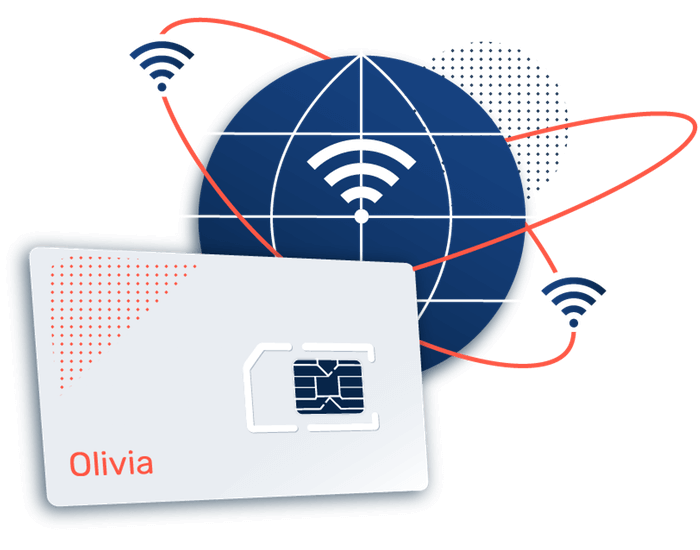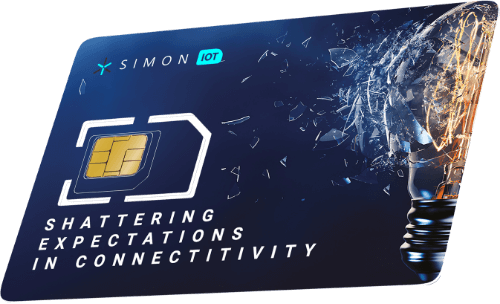IoT Connectivity Products Six Major IoT Connectivity Technologies
IoT Connectivity Products Six Major IoT Connectivity Technologies
Blog Article
IoT Connectivity Issues Overview of IoT Connectivity Protocols

The world has witnessed a major transformation in the finest way we interact with our living areas. Smart houses, outfitted with connected gadgets, have risen dramatically in recognition, offering enhanced convenience, safety, and energy effectivity. However, attaining seamless integration of all these devices closely relies on effective IoT connectivity options.
Various connectivity technologies facilitate communication between units, ensuring that every element of the smart home works harmoniously. Choosing the best IoT connectivity options for smart houses is essential for creating an environment friendly and responsive environment. These solutions range when it comes to vary, power consumption, and the types of units they support, permitting consumers to tailor their smart residence ecosystems to their particular needs.
Wi-Fi is among the most widely used connectivity options, primarily due to its ubiquitous nature and excessive knowledge switch rates. Many smart home gadgets are already designed to connect effortlessly to current Wi-Fi networks. This makes adding new gadgets relatively easy. Tablets, smartphones, and routers can typically support multiple devices concurrently, making it a handy choice for smart home fanatics.
Web Connectivity In IoT Growth of Usable IoT Satellites
However, Wi-Fi isn't with out its challenges. The dependence on a secure internet connection can occasionally lead to performance points, especially with a number of units trying to communicate directly. Furthermore, the vary could be limited relying on the layout of the home. Walls and other barriers can cause signal degradation, which may hinder the efficiency of devices situated removed from the router.

Zigbee is another compelling choice for IoT connectivity in smart homes. This expertise supports low-power gadgets, making it suitable for battery-operated sensors and gadgets. Zigbee creates a mesh community, which suggests every connected system acts as a relay, expanding the range of connectivity throughout the home. This is particularly beneficial in bigger areas the place conventional Wi-Fi might battle.
IoT Connectivity Definition Platforms for IoT Connectivity Management
Z-Wave provides to the suite of options available for smart houses. It operates on a lower frequency than Wi-Fi, which implies it may possibly better penetrate walls and avoid interference from different electronic units. Z-Wave is engineered specifically for house automation, allowing varied gadgets to work together seamlessly. The low power consumption also aids in battery longevity for devices that function on this community.
For functions requiring low knowledge charges but excessive reliability, LoRa (Long Range) provides an excellent alternative. It is particularly useful for agricultural or environmental monitoring devices that only require intermittent data transmission. LoRaWAN (Low Power Wide Area Network) allows these devices to speak over lengthy distances, making it a super solution for expansive properties or smart metropolis purposes.
Cellular connectivity serves as another robust resolution, primarily for units that require fixed internet access but is most likely not installed close to established networks. This ensures that gadgets can send and receive information over the internet instantly, eliminating reliance on residence Wi-Fi techniques. While perhaps more expensive, cellular connectivity offers the benefit of wide-reaching availability, notably in rural or hard-to-reach areas.
Bluetooth can be a major player in the realm of smart residence connectivity, notably for private devices like fitness trackers, smartwatches, and audio system. Its low energy requirements make it a beautiful option for short-range communication. Bluetooth mesh networking enhances the protocol’s functionality, enabling gadgets to communicate effectively even when separated by a lengthy way.
IoT Connectivity Products Options for Choosing IoT Connectivity
Thread is a comparatively newer protocol designed to make device connectivity easier. It also helps low-power devices in a mesh community configuration. What units Thread aside is its IPv6-based communication, which enables more straightforward integration with internet-based systems and services. This adaptability opens the door for future scalability as smart residence technologies proceed to evolve. IoT Network Connectivity.
The integration of varied connectivity protocols is significant for compatibility among units. Many companies have recognized that a single answer may not meet all user needs, resulting in multi-protocol systems that may seamlessly switch between networks. Such flexibility allows owners to customise their smart environments and connect gadgets whatever the producer.

As customers more and more emphasize sustainability, smart homes that facilitate energy-efficient living have gained traction. IoT connectivity options contribute significantly to this pattern. Devices can communicate to optimize energy usage, adjusting heating, cooling, and lighting primarily based on real-time data.
When choosing the right IoT connectivity options for smart homes, consumers ought to fastidiously contemplate their particular necessities. Those prioritizing pace might lean towards Wi-Fi, while people needing to extend the range of connectivity may prefer Zigbee or Z-Wave. Budget, system compatibility, and the potential for future upgrades additionally play a significant role in decision-making.
IoT Connectivity Products Securing IoT Connectivity Solutions
Ultimately, the most effective IoT connectivity options for smart properties will improve not solely automated comfort but additionally the whole living experience by incorporating advanced technology into daily routines. These solutions empower householders to manage their environments better and stay extra sustainably, simultaneously enjoying the benefits of state-of-the-art connectivity.
In conclusion, with the rapid developments in know-how, the landscape of smart home connectivity continues to evolve. As extra units enter the market and extra homeowners embrace automation, the significance of sturdy connectivity options becomes more and more obvious. Those who make look at this website investments time in understanding and implementing these solutions will undoubtedly contribute to creating more intelligent, efficient, and gratifying dwelling areas.
- Various connectivity protocols like Zigbee, Z-Wave, and Wi-Fi cater to totally different smart residence units, enhancing interoperability and gadget communication.
- Mesh networking capabilities allow units to communicate more effectively, expanding coverage and lowering dead zones inside larger homes.
- Low-power wide-area networks (LPWAN) provide energy-efficient solutions for battery-operated devices, promoting longer operational lifespans.
- The integration of edge computing ensures real-time data processing, decreasing latency and enhancing general system responsiveness.
- Cloud-based IoT platforms supply extensive data analytics, enabling customers to optimize gadget utilization and energy financial savings of their smart properties.
- Security options, corresponding to end-to-end encryption and common firmware updates, are essential for shielding smart home knowledge from potential threats.
- Dual-band routers can help each 2.4 GHz and 5 GHz connections, offering flexibility and improved performance for various smart gadgets.
- User-friendly cell applications improve the management of smart home gadgets, enabling seamless interactivity and scheduling functionalities.
- Interoperability standards, corresponding to Matter, facilitate collaboration between totally different producers, promoting seamless cross-device communication.
- 5G know-how promises ultra-low latency and better bandwidth, doubtlessly revolutionizing smart home experiences with faster data switch charges.
What are the different types of IoT connectivity options for smart homes?undefinedThere are a number of IoT connectivity options, together with Wi-Fi, Zigbee, Z-Wave, Cellular, and LoRa. Each provides completely different advantages by means of range, speed, energy consumption, and scalability, allowing for tailored options based mostly on specific smart home needs.
How does Wi-Fi evaluate to Zigbee for smart home devices?undefinedWi-Fi is quicker and extensively used for high-bandwidth applications, while Zigbee is designed for low-power, low-bandwidth tasks, making it ideal for gadgets that require long battery life. Zigbee additionally supports mesh networking, enhancing vary and connectivity amongst units.
IoT Connectivity Management Platform Global Managed IoT Connectivity Services
What factors should I consider when selecting an IoT connectivity solution?undefinedConsider elements like vary, energy consumption, gadget compatibility, security features, and the precise wants of your smart residence ecosystem. Assess how many gadgets you intend to connect and their power requirements, guaranteeing the chosen solution supports your setup.

Are there safety dangers associated with IoT connectivity options for smart homes?undefinedYes, security dangers embody unauthorized entry and knowledge breaches. It’s crucial to determine on solutions with strong encryption and common updates. Implementing robust passwords, firewalls, and keeping firmware updated can considerably enhance your smart home’s safety - Connectivity Technologies In IoT.
IoT Connectivity Management Solutions and Network for IoT Connectivity
Can I combine multiple IoT connectivity solutions in my smart home?undefinedAbsolutely! Many smart home systems assist integration throughout numerous protocols, allowing gadgets using completely different connectivity solutions to work together seamlessly. This flexibility allows users to optimize efficiency and compatibility.
What function does the cloud play in IoT connectivity for smart homes?undefinedThe cloud enables remote management, information storage, and advanced analytics for smart home devices. It facilitates communication between devices and person interfaces, permitting for real-time monitoring and control from anyplace via internet connections.
IoT Connectivity Managementplatform Best IoT Connectivity Management Software
How can I guarantee compatibility among different smart residence devices?undefinedCheck for compatibility labels and make positive that devices comply with widespread standards like Zigbee or Z-Wave. Research ecosystems, corresponding to Google Home or Amazon Alexa, that help a variety of gadgets, simplifying integration and management.
What is the way ahead for IoT connectivity options for smart homes?undefinedThe future is leaning official site in direction of enhanced interoperability, improved safety protocols, and the rise of 5G know-how. These advancements will supply faster speeds, higher device density, and decrease latency, enhancing the overall smart residence expertise.
How can I troubleshoot connectivity issues in my smart home?undefinedStart by checking the ability sources and ensuring gadgets are inside range of their connectivity hub. Restart routers and gadgets as needed. Use both app diagnostics or manufacturer help sources for particular troubleshooting steps tailored to the gadgets in question.
Report this page